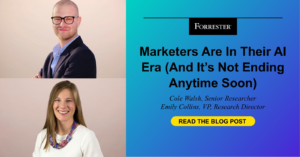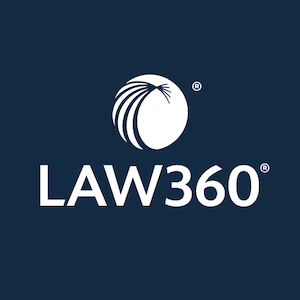It was a typical conversation with a client when the question came up: “What’s the average security spend for organizations like ours?” I’ve heard variations of this query countless times. Knowing this was coming, I responded, “On average, most organizations spend around 3-6% of their IT budget on security.” “Great, we’re at 3%,” the client replied, satisfied with their position. But I wasn’t finished. “Yes, but your IT spend is significantly lower than the industry average for companies of your size. So, in reality, your 3% is like spending 1.5% in a more typical organization. Security spend as a percentage of IT budget is meaningless without understanding your overall IT investment.” Silence. This is a common scenario: A client reaches for benchmarks and metrics without fully grasping the larger context. They assume that as long as they’re hitting a “normal” percentage, they’re in good shape. But benchmarks, while useful in certain cases, are often misleading when taken out of context. The dangers of misusing benchmarks In a similar conversation, we discussed the allocation of resources between maintaining day-to-day IT operations and fostering innovation. I told the client that most IT organizations, particularly mature ones, typically operate on a 60/40 split — 60% maintaining current systems and 40% driving innovation. Their response? “We’re at 40/60.” That’s when I pointed out that they’d just gone through a significant digital transformation. Their current focus on innovation made sense — right now. But I cautioned them that as their systems stabilized, that ratio would likely flip to the standard 60/40, as they focused more on refining and optimizing what they had built. So, if they defined 40/60 as success, when they inevitably flipped to 60/40, would that indicate failure? (Spoiler: No. Just a cycle.) These exchanges highlight a key issue: While benchmarks can provide helpful reference points, relying on them without context can lead to poor decision-making and misplaced confidence. The allure of the benchmark: Why companies ask In the fast-paced, high-pressure world of IT management, leaders are often asked to justify their decisions, spending, and strategic priorities to the business side of the organization. Executives and boards want hard data, and benchmarks offer an easy way to provide seemingly objective metrics. But here’s the challenge: Business leaders tend to look for quick comparisons. They want to know whether they’re spending too much or too little on IT and how they stack up against competitors. Under pressure, IT leaders often reach for the same easy comparisons — benchmarks that tell them how their spending or innovation stacks up. The problem is those benchmarks often don’t take the unique characteristics of the company into account. Whether it’s security spending or operations/innovation splits, generic benchmarks ignore the broader strategic context. Understanding why context matters Let’s break down why using benchmarks without considering the context can be misleading, starting with the example of security spending. It’s easy to say that 3-6% of an IT budget should be allocated to security. But what does that percentage actually represent? A company with a robust IT budget, with mature systems, cloud architecture, and automation, will likely be spending 3-6% on advanced security measures, including threat detection, real-time monitoring, and vulnerability management. But what if your IT budget is comparatively small? Your 3% spend on security might mean you can afford only basic firewall protection, patching systems, and outdated monitoring tools. In this case, the 3% benchmark means little because you’re not comparing apples to apples. The organization with a bigger IT budget can do far more with their security spend — even at the same percentage — because their overall IT investment is higher. Therefore, simply hitting the “right” percentage isn’t enough to ensure proper security posture. A broader view: Benchmarking for innovation and operations Similarly, in the case of IT innovation versus operational spending, a 60/40 split is a useful benchmark, but only for organizations that are in a stable, mature phase of their technology life cycle. For a company that just went through a digital transformation, like the client in my example, the ratio is going to skew toward innovation — likely closer to 40/60 or even 30/70. That’s not a problem because the organization is focused on building new capabilities. The issue arises when the leadership sees this 40/60 ratio and assumes they’re either behind or ahead of the industry based on a benchmark without understanding their unique situation. Inevitably, as the company stabilizes and refine its new systems, the balance will shift. Operations will require more resources, and the ratio will move toward the traditional 60/40. It’s a natural, cyclical process. How to use benchmarks effectively While benchmarks can be helpful, the key is to use them intelligently. Here are some guiding principles for ensuring that benchmarks are a tool for insight, rather than a distraction: Understand the strategic context: Before you reach for benchmarks, ask yourself: What phase is my organization in? Are you in the midst of a transformation, or are you operating in a steady-state environment? This will dramatically change how relevant any given benchmark is to you. Analyze your specific needs: Don’t just compare percentages — understand what’s behind the numbers. If you’re looking at security spend, don’t just aim for 3-6%. Instead, ask what capabilities your company needs to defend against its specific threats, and then calculate how much investment those capabilities require. Avoid one-size-fits-all comparisons: A company that’s undergoing rapid growth will spend more on innovation than a legacy company trying to maintain aging systems. Benchmarks for one organization may be completely meaningless for another. Use benchmarks to inform, not dictate: The best way to leverage benchmarks is as a tool to inform your decision-making. They should not dictate your strategy. Understand the “why” behind the numbers, and don’t be afraid to move away from the benchmark if your situation demands it. When benchmarks should be ignored Finally, there are times when benchmarks simply don’t matter. When facing business pressures to meet specific benchmarks, ask yourself: Is this number












